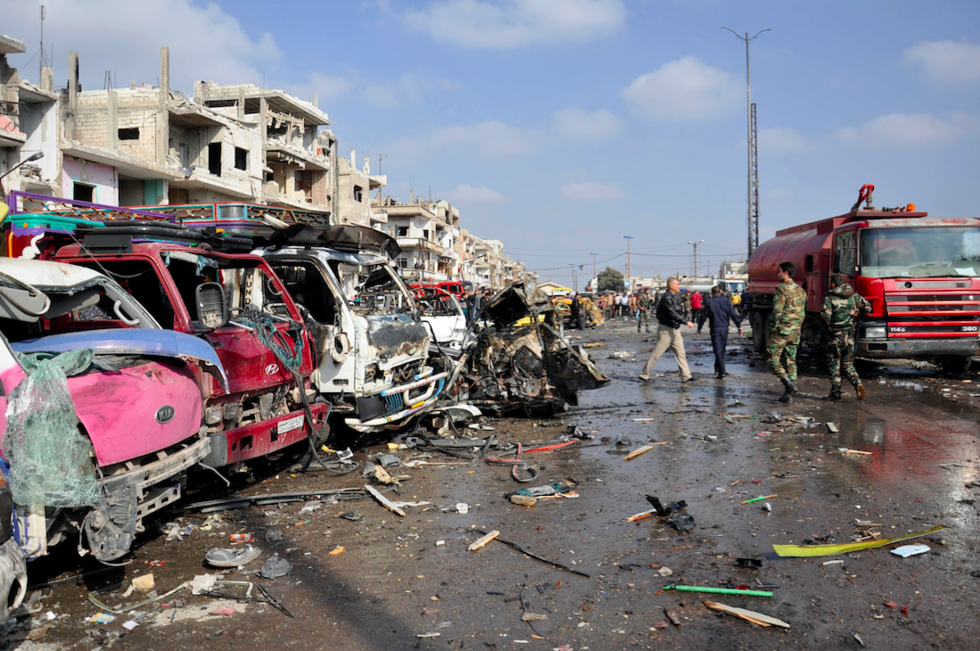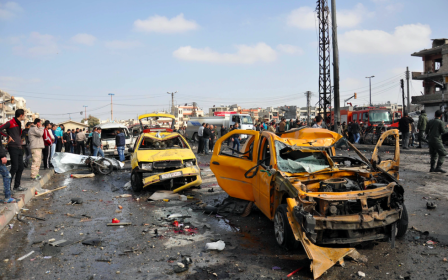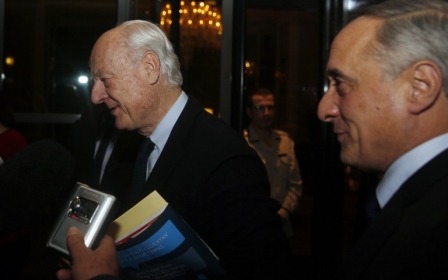At least 142 killed as IS bombings rock Damascus and Homs

At least 142 people, largely civilians, were killed on Sunday after two car bombs rocked the government-held central city of Homs and then several separate explosions went off near a Shia shrine south of the Syrian capital.
The Islamic State (IS) group claimed responsibility for the attacks, some of the deadliest to hit government-held areas since the uprising against Syrian President Bashar al-Assad began five years ago.
At least 83 people were killed in the Damascus attacks that included a car bombing near a Shia shrine south of the Syrian capital, Syria's official news agency SANA reported.
SANA, citing a police source, said 178 people, including children, were among the wounded.
"The attacks came as pupils were leaving school, and several of them were killed," Syria's state broadcaster reported.
Islamic State quickly claimed the attack on social media, praising two suicide bombers who detonated their vests at the scene.
Sayyida Zeinab contains the grave of a granddaughter of the Prophet Mohammed and is particularly revered as a pilgrimage site by Shia Muslims.
It is also the site of several attacks and bombings. An IS attack on 31 January killed over 70 people and injured over 100 more.
Two deadly blasts rock Homs
Sunday's attack on the shrine came just hours after two car bombs detonated in the largely government-held central city of Homs, killing 59 people, the Observatory said. More than a 100 others were also injured.
It was one of the biggest bombings to occur in Homs. Witnesses told Russian media that the bombs went off just minutes apart and that at least one was detonated by a suicide bomber.
Scenes of carnage were broadcast on national television showing air thick with dust and smoke rising from blazes started by the blasts in the al-Zahraa neighbourhood.
The bombings caused extensive damage, ripping the fronts off shops surrounding the site and mangled cars and minibuses.
The attacks were some of the deadliest to hit the city, which has been regularly targeted in blasts, including a devastating attack at a school in October 2014 that killed 48 children and four adults.
Al-Zahraa neighbourhood in particular has been the target of multiple attacks, including last month, when at least 22 people were killed in a double suicide bombing claimed by IS.
Once dubbed the "capital of the revolution," Homs city is now largely controlled by the government, with the exception of the Waer district, which is being gradually turned over to the government under a deal with opposition fighters.
IS defeats and ceasefire chatter
The blasts come as the Syrian government, flanked by Russian air raids, said that it managed to make a string of advances against IS in the northern Aleppo province.
According to the Syrian Observatory, at least 50 fighters of the Islamic State (IS) group have been killed in the last 24 hours.
Reports vary, with the government claiming that it is now in full control of 25 villages previously held by IS, although the Observatory denies this and says that only 16 villages have been impacted and that not all have been taken over, but instead just besieged by forces loyal to Syrian President Bashar al-Assad.
Government forces and their Russian allies have been launching a massive campaign in the north, aimed at rooting out rebels from Aleppo city, as well as IS from the surrounding countryside.
Fears are high that the last remaining rebel supply routes into Aleppo will soon be cut, with some aid groups saying that only one road into the city remains.
A ceasefire was meant to go into effect on Friday evening, but failed to materialise after the Russians did not stop bombing. On Saturday, Moscow said that it would continue to support Assad in his fight against "terrorism" which has previously meant most rebel groups, as well as those classified as terrorists by the UN such as the al-Nusra Front and IS.
Despite the heavy fighting, US Secretary of State John Kerry said a "provisional agreement" had been reached on a ceasefire to end the Syrian conflict.
After a phone call with his Russian counterpart Sergej Lavrov, Kerry said the details of the ceasefire still needed to be resolved, but that the international community was "closer to a ceasefire today than we have been" while adding we could see the guns fall silent in the coming days.
He also said that both the US and Russia will reach out to various sides in the conflict so that the implementation could take place.
On Saturday, the Higher Negotiations Committee, an umbrella group of opposition and rebel forces, stressed that they would agree to a temporary ceasefire under several conditions, namely the cessation of aerial strikes by the Syrian government and Russian forces, as well as the lifting the sieges and the releasing of political prisoners.
New MEE newsletter: Jerusalem Dispatch
Sign up to get the latest insights and analysis on Israel-Palestine, alongside Turkey Unpacked and other MEE newsletters
Middle East Eye delivers independent and unrivalled coverage and analysis of the Middle East, North Africa and beyond. To learn more about republishing this content and the associated fees, please fill out this form. More about MEE can be found here.




